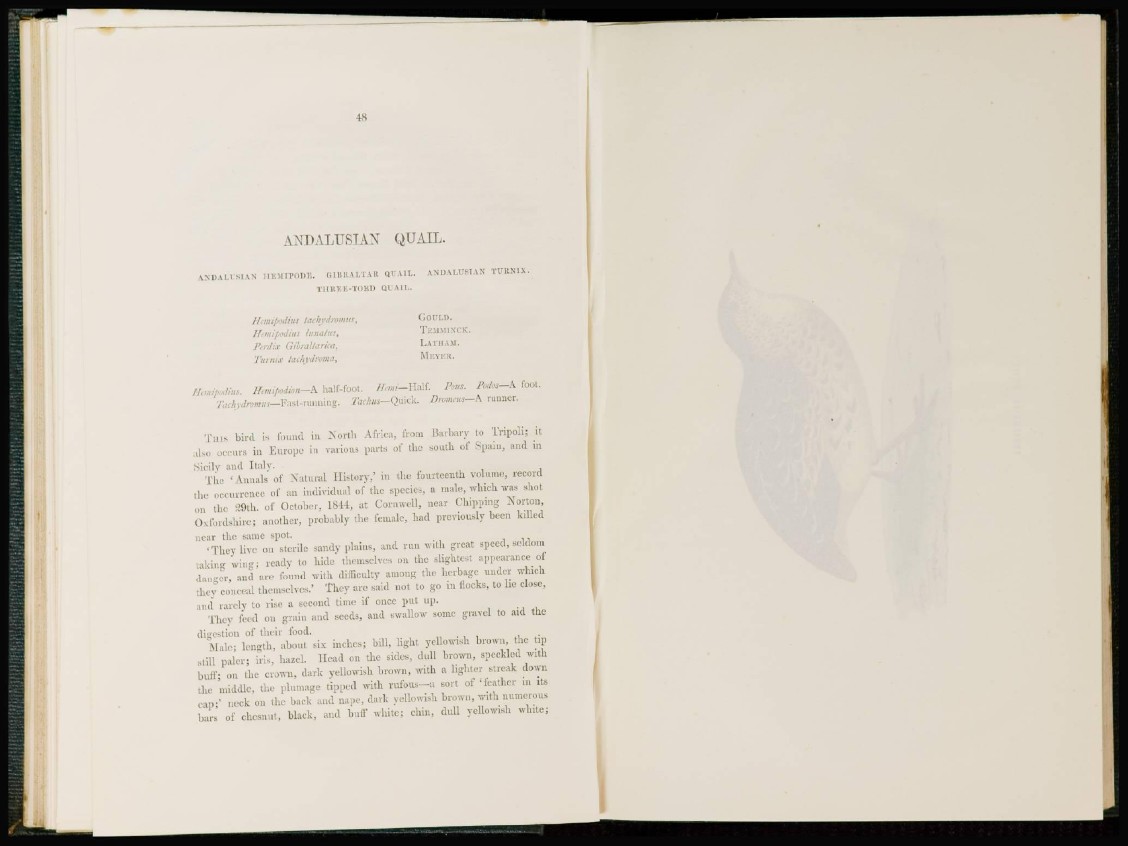
ANDALUSIAN QUAIL.
\ M ) \ l . l MAN HEMIP0DE. G I B R A L T A B QUAIL. ANDALUSTAM TURNIX.
THREE-TOED QUAIL.
Hemipodius tachydromus, Gould.
Hemipodius iunatus, TSMHINCK.
Perdix GibraUariea, La t h a m.
Tumitt tachydrvma, MEYER.
tit mi pod ins. Hemipodion—A half-foot. Hemi—Half. Pons. Podos—A foot.
Tachydromus—Fast-running. Tachus—Quick. Droimus—A runner.
T i n s bird is found in North Africa, from Barbary to Tripoli; it
also occurs in Europe in various parts of the south of Spain, and in
Sicily and Italy.
The 'Annals of Natural History,' in the fourteenth volume, record
the occurrence of an individual of the species, a male, which was shot
on the 29th. of October, 1844, at Cornwall, near Chipping Norton,
Oxfordshire; another, probably the female, had previously been killed
near the same spot.
' T h e y live on sterile sandy plains, and run with great speed, seldom
taking wing; ready to hide themselves on the slightest appearance of
danger, and are found with difficulty among the herbage under which
they conceal themselves.' They are said not to go in flocks, to lie close,
and rarely to rise a second time if once put up.
They feed on grain and seeds, and swallow some gravel to aid the
digestion of their food.
Male; length, about six inches; bill, light yellowish brown, the tip
slill paler; iris, hazel. Head on the sides, dull brown, speckled with
buff; on the crown, dark yellowish brown, with a lighter streak down
the middle, the plumage tipped with rufous—a sort of 'feather in its
c a p ;' neck on the back and nape, dark yellowish brown, with numerous
bars of chesnut, black, and buff white; chin, dull yellowish white;